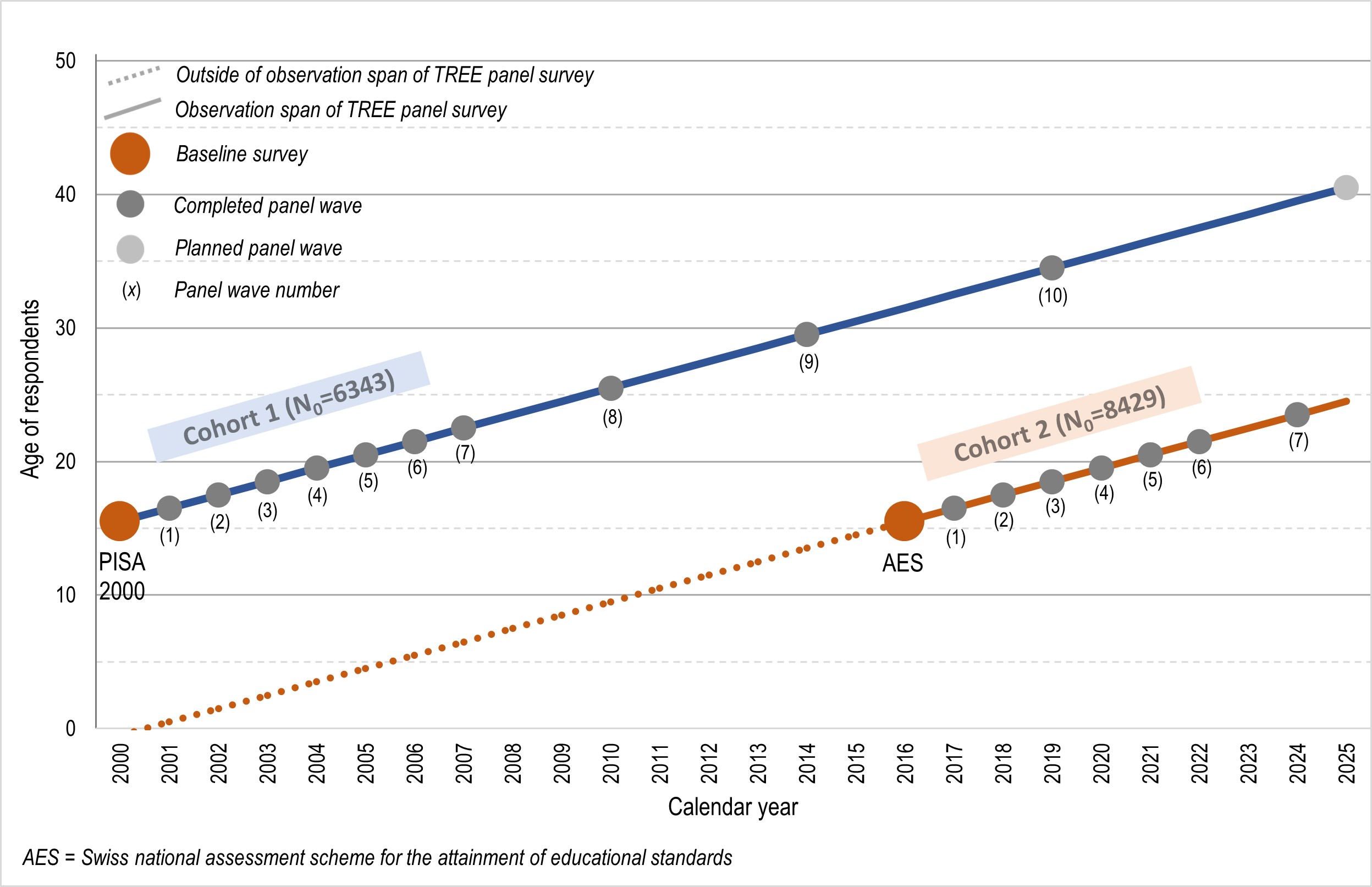Study Profile

TREE (Transitions from Education to Employment) is a multi-cohort, multi-disciplinary panel study of compulsory school leavers that provides, for the use of the social scientific community at large, high-quality longitudinal data on post-compulsory educational and occupational trajectories at national and regional levels in Switzerland.
The first TREE panel (TREE1) surveys compulsory school leavers of the year 2000. Its baseline is the Swiss PISA survey of that year. It thus draws on a large national baseline sample covering all language regions. The TREE1 cohort has been re-surveyed ten times since, with the most recent panel wave conducted in 2019/20 at an average respondents’ age of 35. TREE1’s overall observation span presently extends to 20 years, ranging from mid-adolescence well into middle-age adulthood. As the panel is ongoing, TREE1 is developing into the very first full-blown life course survey in Switzerland, allowing for long-term longitudinal analyses of education and labour market pathways as well as developments in a wide range of other life domains.
The second TREE panel (TREE2) draws on a national large-scale assessment of mathematics skills conducted in 2016 as baseline survey. Similar to PISA 2000, this survey is classroom-based and administered to a large, both regionally and nationally representative sample with an excellent coverage and response rate. Since 2016, TREE2 has been re-surveyed seven times and has reached an average age of almost 25 years.
Along with detailed data of context characteristics covering domains such as family, school and personality, the baseline surveys of both TREE cohorts provide sophisticated and elaborate measurements of respondents’ cognitive skills which are at the respondents’ command at the end of their compulsory schooling (9th grade). As TREE1, the TREE2 panel collects detailed data on education and labour market spells, which are contextualized by a rich set of complementary information on various life domains that, in previous research, have been identified as factors relevant for the respondents’ later transitions from education into working and adult life. Outside the Anglo-Saxon countries and apart from the NEPS in Germany, this makes TREE the first and only large-scale national multi-cohort study that follows up youth on its pathways into adulthood – and beyond.
TREE is mainly funded by the Swiss National Science Foundation (SNF) and located at the University of Bern.
TREE Cohort Design


